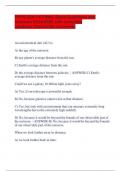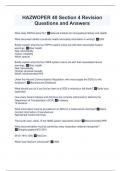Exam (elaborations)
PHYS 284 1-6 Midterm Exam Questions and Answers 2024/2025 with complete solutions;Concordia University
- Course
- Institution
PHYS 284 1-6 Midterm Exam Questions and Answers 2024/2025 with complete solutions;Concordia University
[Show more]




